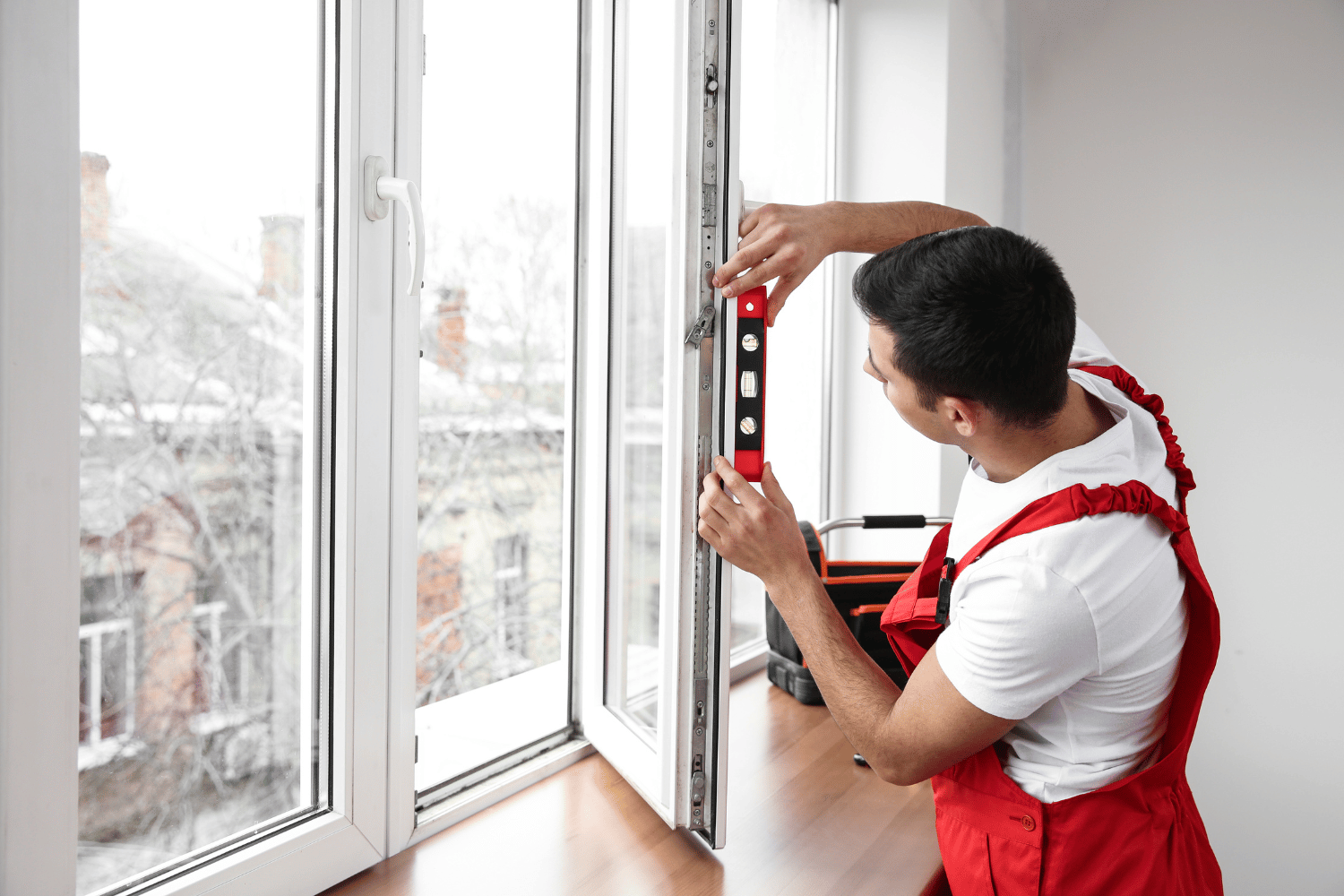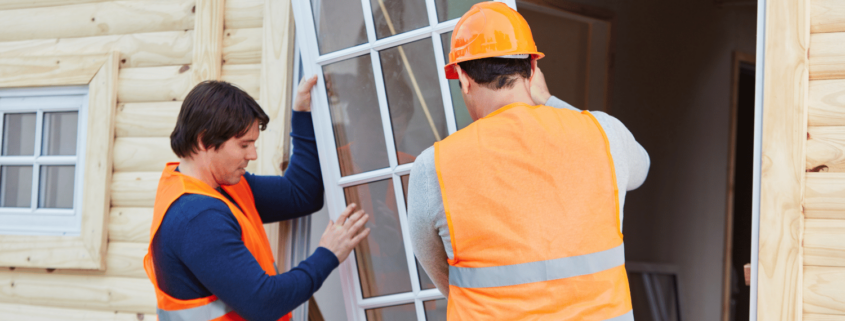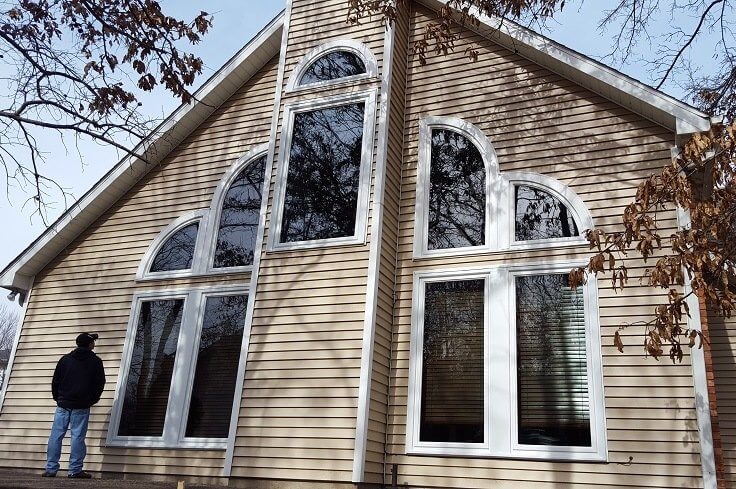The Ultimate Guide to Installing New Windows in an Old House
Installing new windows in an old house? This guide covers everything you need to know—from assessing your existing windows to choosing replacements that fit and maintain your home’s charm while considering the importance of installing new windows old house.
Key Takeaways
-
Assess the condition of your old windows to decide if repairs or replacements are necessary for energy efficiency and comfort.
-
Choose the right type and material of replacement windows to enhance your home’s aesthetic while improving energy efficiency.
-
Proper measurement and installation, including sealing and insulating, are crucial for ensuring new windows fit well and perform optimally.
Assessing Your Old Windows

A detailed illustration showing various types of old window frames that need assessment.
Before starting the window replacement process, assess the condition of your current windows. This will help determine whether you need to repair or replace them. Windows that are over 20 years old typically require a thorough inspection to check for drafts, leaks, and other signs of inefficiency. Evaluating your old windows helps you make informed decisions, saving time and money while boosting energy efficiency and structural integrity.
Common problems in old windows, such as drafts and visible deterioration, can significantly impact your home’s comfort and energy bills. Spotting these issues early contributes to a more efficient and comfortable living space.
Identifying Common Problems in Old Windows
Old windows often suffer from a range of issues that compromise their functionality and efficiency. Visible deterioration in window frames, such as cracks or decay, is a clear signal that replacement is needed. Additionally, drafts and leaks are common problems that indicate your windows are no longer providing adequate insulation. Resolving these problems maintains energy efficiency and comfort in your home.
Neglected window maintenance can lead to significant problems, including increased energy bills and decreased indoor comfort. Recognizing these common problems allows you to take steps to enhance your windows and overall efficiency.
Deciding Between Repair and Replacement
Whether to repair or replace old windows depends on factors like cost, energy efficiency, and the condition of the window frames. High-grade wood components in your window frames might indicate that repairs are a viable option. However, if the frames are significantly damaged, replacement might be the better choice.
Custom window replacements can fit perfectly into existing window frames, minimizing the need for extensive wall alterations and ensuring a seamless look. On the other hand, installing stock windows in old frames can lead to mismatched designs and poor fit, potentially reducing your home’s value.
New windows can cut down drafts and boost energy efficiency, making your home more comfortable and economical with new construction windows.
Choosing the Right Replacement Windows

An illustration of a selection of replacement windows suitable for old houses.
Replacing old windows aims to enhance your home’s appeal, reduce energy costs, and improve natural light. Replacing old windows can transform your living space, making it brighter and more efficient. However, choosing the right type and material for your replacement windows is crucial to achieving these benefits.
Working with qualified window companies ensures you select the best window solutions for your old house. These experts can provide guidance, competitive pricing, and advice on the best options for your home.
Types of Replacement Windows
There are several types of replacement windows to consider, each with its own set of benefits. Full-frame replacement windows are ideal when the old window frame, sill, or jambs are rotted. These windows involve replacing the entire window, providing a fresh start and ensuring a perfect fit.
Insert windows, also known as pocket windows, are designed to fit into the existing frame without the need for full replacement. This option is less invasive and can be more cost-effective, making it a popular choice for many homeowners.
Materials for Replacement Windows
The material of your replacement windows plays a significant role in their performance and aesthetic appeal. Wood is a traditional material that offers excellent insulation and can be restored to maintain historical integrity, but it requires regular maintenance to prevent rot and decay.
Vinyl replacement windows, on the other hand, are low-maintenance and energy-efficient, but they may lack the charm of natural materials. Aluminum windows are durable and resistant to the elements, but they may conduct heat, resulting in lower energy efficiency compared to wood and vinyl options.
Choosing the right material depends on your priorities, whether it’s maintaining historical accuracy, reducing maintenance, or enhancing energy efficiency.
Measuring for New Windows

An illustration depicting the measuring process for installing new windows in an old house.
Accurately measuring the existing window frame ensures the new window fits properly. This step is critical, as incorrect measurements can lead to poorly fitting windows and extra costs. Inspecting the framing around the opening is also necessary to identify any necessary repairs before installing a new window.
Ensuring the rough opening is level and square is vital for proper window installation. This will help avoid issues down the line and ensure that your new windows perform as expected.
Tools You Will Need
To measure accurately, you’ll need a tape measure for precision and a level to check the window is straight horizontally and vertically.
These tools ensure that your new windows fit perfectly and function properly.
Step-by-Step Measuring Guide
When measuring for new windows, take multiple measurements to account for any irregularities in the opening. Measure the width of the window frame at the top, middle, and bottom to ensure a consistent fit. Similarly, measure the height from left to right and center to account for any variations.
Subtract a small amount from your measurements to allow for installation adjustments. This will help ensure that the new window fits snugly and can be installed without issues.
Preparing for Installation
Before installation, proper preparation is key. Remove the old windows and ensure the opening is clean and ready for installation. A strong pry bar can help remove old window panes and frames without damaging the surrounding structure. Prepping the window opening includes cleaning the rough opening to ensure a proper fit for the new window.
Window installation often requires a fair amount of carpentry skills and home remodeling experience. Ensuring the area is debris-free and ready for the new window is vital for successful installation.
Removing Old Windows
Proper removal of old window frames prevents damage to the surrounding structure. This step is particularly important in older homes, where the structural integrity of the walls is crucial. Additionally, old windows in homes built before 1978 may contain lead paint, requiring special precautions to ensure safe removal.
Carefully removing old windows smooths the installation process and helps avoid potential issues.
Prepping the Window Opening
Cleaning the rough opening ensures a proper fit for the new window. This involves removing any debris, old caulk, or paint that could interfere with the installation. Making sure the opening is level and square helps the new window fit perfectly and function as intended.
Taking these steps will help ensure a smooth installation process and long-lasting performance of your new windows.
Installing New Windows

A step-by-step illustration of the process of installing new windows in an old house.
Installing new windows involves several steps, including inserting, sealing, and insulating the new window. Following detailed instructions ensures a successful installation. A quality power drill is essential for securing new windows into place. Additionally, using a durable caulking gun with sealant will help seal gaps around the new windows, enhancing their efficiency and durability.
Carefully following the installation steps ensures your new windows are installed correctly and perform as expected.
Inserting the New Window
Lift the new window and place it into the prepared rough opening. Use a level to check that the window is even horizontally and vertically (plumb). Fasten the window frame to the structure with screws or brackets, ensuring it remains steady. Check the fit of the window and make any necessary adjustments to ensure it sits perfectly in place.
These steps will help ensure that your new window is securely window installed and functions properly.
Sealing and Insulating
Apply elastomeric caulk to the inner face of the casings and the sill before installing the window. Fill gaps around the window with minimally-expanding foam or caulk to complete the installation. Ensure weatherstripping at movable joints for proper storm window installation to enhance energy efficiency.
These steps will help ensure that your new windows are well-sealed and insulated, providing maximum energy efficiency and comfort.
Installing Interior Trim
Before installing interior trim, ensure the wall surface is clean and any old paint or debris is removed. Check that the window is properly aligned and secure to avoid issues with trim installation.
Start the trim installation by measuring and cutting pieces to fit the window frame accurately. Use a nail gun or finishing nails to attach the trimmed pieces securely to the wall around the window.
After installation, fill nail holes with wood putty and sand down for a smooth finish before painting or staining. This will give your new windows a polished and professional look.
Enhancing Energy Efficiency with Storm Windows

An illustration highlighting the benefits of storm windows for energy efficiency in old houses.
Adding storm windows significantly enhances your home’s energy efficiency. Storm windows effectively seal drafts that affect old windows, enhancing indoor comfort. They can also reflect outside heat in summer and retain heat indoors in winter, providing year-round benefits.
Updating windows in an old house preserves its aesthetic appeal and improves energy efficiency. Carefully selecting and installing storm windows leads to a more comfortable and cost-effective home.
Benefits of Storm Windows
High-quality storm windows can reduce cooling costs by more than 30%. Low-E storm windows are designed to reflect infrared heat, significantly improving energy efficiency. Retrofitting historic windows with modern features improves energy efficiency while keeping the original character intact.
These benefits make storm windows an excellent investment for homeowners looking to improve energy efficiency and comfort.
Installing Storm Windows
Installing storm windows typically takes 20-30 minutes per window. Installing storm windows over new or existing windows helps enhance energy efficiency and protect the underlying windows. Properly installed storm windows effectively improve thermal efficiency without compromising aesthetics.
These steps will help you get the most out of your storm windows, ensuring they provide maximum benefits.
Maintaining the Charm of Your Old House
Upgrading windows while maintaining your old house’s charm preserves its historical significance and enhances energy efficiency. Newer storm windows can improve comfort by reducing drafts and cutting down outside noise. Thoughtful window upgrades contribute significantly to both the charm of the home and the comfort of its occupants.
Choosing designs and materials that reflect the original style ensures your home retains its unique character while benefiting from modern window technology.
Matching Styles and Designs
Selecting window designs that align with your home’s architectural style enhances its aesthetic integrity. Window styles should reflect the architectural design of the home to enhance its visual appeal.
By carefully selecting window designs, you can maintain the historical charm of your home while enjoying the benefits of modern windows.
Preserving Historical Features
When selecting new windows, choose designs that closely mimic the original styles to maintain architectural integrity. Harmonizing window designs with exterior architectural elements creates a coordinated and appealing appearance.
Preserving historical features maintains the charm of your old house and respects its unique story and design. By paying attention to these details, you ensure that your home remains a testament to its historical roots while benefiting from modern advancements in window technology.
Summary
Replacing windows in an old house is a journey that starts with assessing the condition of your current windows and deciding on the best course of action. Whether you choose to repair or replace, selecting the right type and material for your new windows is crucial to maintaining both functionality and aesthetics. Accurate measurements and proper preparation ensure a smooth installation process, while thoughtful choices in design and materials help preserve the historical charm of your home.
In conclusion, updating your old windows can significantly enhance your home’s energy efficiency, comfort, and value. By following this guide, you can make informed decisions that balance modern benefits with historical integrity. Embrace the opportunity to revitalize your old house, making it a comfortable and beautiful place to live for years to come.
Frequently Asked Questions
How do I decide between repairing and replacing my old windows?
Deciding between repairing and replacing your old windows comes down to cost, energy efficiency, and the condition of the frames. If they’re significantly damaged, replacement might be the better way to go, while well-maintained frames can likely be repaired.
What types of replacement windows are available?
You’ve got options with replacement windows! The main types to consider are sash kits, insert replacements, and full-frame units, each offering unique benefits based on your existing frames.
What materials should I consider for replacement windows?
Consider wood for great insulation, vinyl for low maintenance, and aluminum for durability. Each material has its advantages, so choose based on your needs!
How do I measure my windows accurately?
To measure your windows accurately, grab a tape measure and check the width and height at different points to account for any irregularities. Just make sure the rough opening is level and square for the best fit!
What are the benefits of installing storm windows?
Installing storm windows can significantly reduce cooling costs and enhance energy efficiency by sealing drafts and retaining heat. It’s a smart choice for improving your home’s comfort year-round.
About The Author
Elias Abadi
Owner
Elias, the founder of CoMo Premium Exteriors, has steered the company to become a leading exterior renovation firm in Mid-Missouri, emphasizing quality and customer-centric values. A Columbia resident since age 10, he is an ardent Mizzou athletics supporter. Outside of work, Elias enjoys family time, attending his three sons’ sports activities, and engaging in outdoor pursuits like hiking, fishing, gardening, and hunting.










